幻聴で思った事その4
2022.6.18(Sat)
福岡大
エデュケーション1|躾教育1|学校1|学問1|一般教養1|イザベラクラスルーム|イザベルルーエレイナ
英語で気を付けることは修飾名詞は、名詞の前に就ける。元老は修飾名詞である。Be careful in English. Nouns can be preceded by nouns. Genro is a noun.
名詞カミールの前に付ける日本語の正式名称はカミール元老であるが、英語はエルダーカミールとして元老カミールと直訳する。The official Japanese name that precedes the noun Kamir is Genro Kamir, but English is literally translated as Elder Kamir as Elder Kamir.
英語でオブの使い方を気を付けなければならない。これは、オブは、先頭と、後をその部分のみを入れ替える。You have to be careful about how to use Ob in English. This means that Ob swaps only that part at the beginning and after.
例えば、エンドオブファイルは、ファイルエンドと同じ意味である。For example, end of file has the same meaning as file end.
行使はエクササイズであるが関税エクサイズとは異なる。exciseは物品税という関税の意味で在り、exercise行使とはとんでもなく異なる。Exercise is an exercise, but not a tariff exercise. excise means excise tax, which is ridiculously different from exercise exercise.
必要なのは第四格詞であり誰に、誰を、誰は、誰がというものである、例えば彼はHeであるがAll that is needed is the fourth case, who, who, who, who, for example he is He.
He isは彼が、To Himは彼に、彼をはHim、彼ははHeとなる。He is him, To Him is him, he is Him, he is He.
また主要な語句であるOF、IS、AT、To、For、AS、with、From、Dear、On、Under、In、Out、Haveなどは基本である。
The main terms OF, IS, AT, To, For, AS, with, From, Dear, On, Under, In, Out, Have, etc. are basic.
OFは誰のISは誰は、Atは誰に、Toは誰からTo誰にに、For誰の為に、ASは同位に結論付け誰なので、withは誰と一緒にWho is OF, who is IS, who is At, who is To, who is To, For Who, and AS is the same.
Fromは誰から、Dearは誰に宛て、Onは何の上に、Underは何の下に、Inは何処の土地で居る、Outは何処の土地から出る、Haveは何をを持っている。From who, Dear to whom, On above what, Under under what, In where the land is, Out from where the land, Have what.
また、条件を満たさなかった言葉に使う言葉にThrough(スルー)がある。From has to, Dear to, On to the top, Under to the bottom, In to enter, Out to exit from, and Have to.
何かについて答えるにはabout(アバウト)を使う。Use about to answer something.
Also(オールソー)は、其の上で~という意味になる。Also means on top of that.
Whenと、Thenは異なる。Whenは何時という意味で、ThenはそれからWhen and Then are different. When means what time, Then then
またその場合That Caseというその場合がある。In that case, there is a case called That Case.
Caseは命令形では動詞を先頭にするので場合はCase Thatに成らなければならない。In the imperative form, the verb is at the beginning of the case, so the case must be Case That.
LessThanはそれ以下、MoreThanはそれ以上Thanはそれよりもという意味になる。LessThan means less, MoreThan means more, and Than means more.
Theはそのという意味である。The means that.
順序はカンマの位置で前後が逆転する。これは日本語と、英語を訳したとき、The order is reversed at the position of the comma. This is when translating Japanese and English
後の語句に最初の宣言がつかなければならず、ピリオドまでの範囲すべてにカンマ後ろ側から同じ意味を排除する。The latter phrase must have the first declaration, excluding the same meaning from behind the comma in the entire range up to the period.
61鍵盤がプロピアノおよびプロキーボードという楽器である。The 61-key keyboard is an instrument called a professional piano and a professional keyboard.
82鍵盤が最高のグランドピアノである。82鍵盤であれば全て和音を作らなくても演奏できる。The 82-key keyboard is the best grand piano. With 82 keys, you can play without making chords.
82鍵盤は6畳間に設置することが出来ない。そして、和音を調律する時、最大で8和音まで可能である。The 82-key keyboard cannot be installed between 6 tatami mats. And when tuning chords, up to 8 chords are possible.
8和音としたのは、親指を使っても他の指を使ってもピアノに同時に8鍵盤しか弾けない。The 8 chords mean that you can only play 8 keys on the piano at the same time, whether you use your thumb or other fingers.
そして和音と単音が混ざると旋律が崩れ音がおかしくなる。And when chords and single notes are mixed, the tune breaks and the sound becomes strange.
和音と一つの音を合わせるとき、両手で、例えばドであれば一番鍵盤と、十三鍵盤を同時に叩く。When combining a chord with a single note, use both hands to hit the first and thirteen keys at the same time, for example, if it is a do.
音ドレミファソラシドのドの位置は周期的に来ており、2の黒の次の3の黒の次であるシの次が必ずドである。The position of the sound Doremi Fasolaside's do comes periodically, and the do is always next to the shi, which is next to the black of the 2 and the black of the 3's.
2022.6.18(Sat)
福岡大
エデュケーション1|躾教育1|学校1|学問1|一般教養1|イザベラクラスルーム|イザベルルーエレイナ
英語で気を付けることは修飾名詞は、名詞の前に就ける。元老は修飾名詞である。Be careful in English. Nouns can be preceded by nouns. Genro is a noun.
名詞カミールの前に付ける日本語の正式名称はカミール元老であるが、英語はエルダーカミールとして元老カミールと直訳する。The official Japanese name that precedes the noun Kamir is Genro Kamir, but English is literally translated as Elder Kamir as Elder Kamir.
英語でオブの使い方を気を付けなければならない。これは、オブは、先頭と、後をその部分のみを入れ替える。You have to be careful about how to use Ob in English. This means that Ob swaps only that part at the beginning and after.
例えば、エンドオブファイルは、ファイルエンドと同じ意味である。For example, end of file has the same meaning as file end.
行使はエクササイズであるが関税エクサイズとは異なる。exciseは物品税という関税の意味で在り、exercise行使とはとんでもなく異なる。Exercise is an exercise, but not a tariff exercise. excise means excise tax, which is ridiculously different from exercise exercise.
必要なのは第四格詞であり誰に、誰を、誰は、誰がというものである、例えば彼はHeであるがAll that is needed is the fourth case, who, who, who, who, for example he is He.
He isは彼が、To Himは彼に、彼をはHim、彼ははHeとなる。He is him, To Him is him, he is Him, he is He.
また主要な語句であるOF、IS、AT、To、For、AS、with、From、Dear、On、Under、In、Out、Haveなどは基本である。
The main terms OF, IS, AT, To, For, AS, with, From, Dear, On, Under, In, Out, Have, etc. are basic.
OFは誰のISは誰は、Atは誰に、Toは誰からTo誰にに、For誰の為に、ASは同位に結論付け誰なので、withは誰と一緒にWho is OF, who is IS, who is At, who is To, who is To, For Who, and AS is the same.
Fromは誰から、Dearは誰に宛て、Onは何の上に、Underは何の下に、Inは何処の土地で居る、Outは何処の土地から出る、Haveは何をを持っている。From who, Dear to whom, On above what, Under under what, In where the land is, Out from where the land, Have what.
また、条件を満たさなかった言葉に使う言葉にThrough(スルー)がある。From has to, Dear to, On to the top, Under to the bottom, In to enter, Out to exit from, and Have to.
何かについて答えるにはabout(アバウト)を使う。Use about to answer something.
Also(オールソー)は、其の上で~という意味になる。Also means on top of that.
Whenと、Thenは異なる。Whenは何時という意味で、ThenはそれからWhen and Then are different. When means what time, Then then
またその場合That Caseというその場合がある。In that case, there is a case called That Case.
Caseは命令形では動詞を先頭にするので場合はCase Thatに成らなければならない。In the imperative form, the verb is at the beginning of the case, so the case must be Case That.
LessThanはそれ以下、MoreThanはそれ以上Thanはそれよりもという意味になる。LessThan means less, MoreThan means more, and Than means more.
Theはそのという意味である。The means that.
順序はカンマの位置で前後が逆転する。これは日本語と、英語を訳したとき、The order is reversed at the position of the comma. This is when translating Japanese and English
後の語句に最初の宣言がつかなければならず、ピリオドまでの範囲すべてにカンマ後ろ側から同じ意味を排除する。The latter phrase must have the first declaration, excluding the same meaning from behind the comma in the entire range up to the period.
61鍵盤がプロピアノおよびプロキーボードという楽器である。The 61-key keyboard is an instrument called a professional piano and a professional keyboard.
82鍵盤が最高のグランドピアノである。82鍵盤であれば全て和音を作らなくても演奏できる。The 82-key keyboard is the best grand piano. With 82 keys, you can play without making chords.
82鍵盤は6畳間に設置することが出来ない。そして、和音を調律する時、最大で8和音まで可能である。The 82-key keyboard cannot be installed between 6 tatami mats. And when tuning chords, up to 8 chords are possible.
8和音としたのは、親指を使っても他の指を使ってもピアノに同時に8鍵盤しか弾けない。The 8 chords mean that you can only play 8 keys on the piano at the same time, whether you use your thumb or other fingers.
そして和音と単音が混ざると旋律が崩れ音がおかしくなる。And when chords and single notes are mixed, the tune breaks and the sound becomes strange.
和音と一つの音を合わせるとき、両手で、例えばドであれば一番鍵盤と、十三鍵盤を同時に叩く。When combining a chord with a single note, use both hands to hit the first and thirteen keys at the same time, for example, if it is a do.
音ドレミファソラシドのドの位置は周期的に来ており、2の黒の次の3の黒の次であるシの次が必ずドである。The position of the sound Doremi Fasolaside's do comes periodically, and the do is always next to the shi, which is next to the black of the 2 and the black of the 3's.











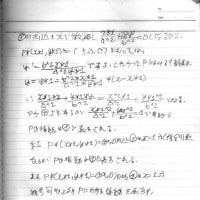
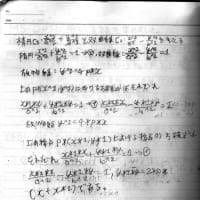
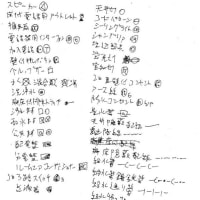
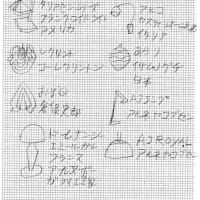
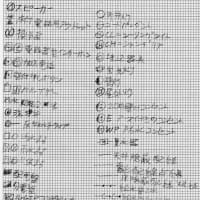
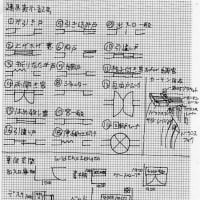
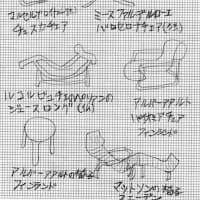
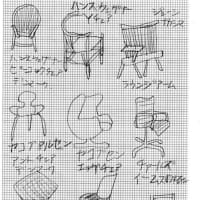
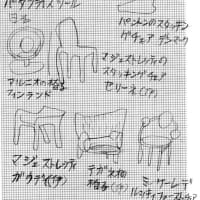
※コメント投稿者のブログIDはブログ作成者のみに通知されます